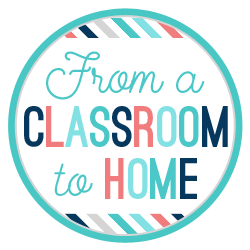 I have tried the cute system of book organization where every book was grouped by theme or author, but honestly, it didn't work for me. I have found a simple way that works for me and it's aligned with our school's Accelerated Reader (AR) program.
I have tried the cute system of book organization where every book was grouped by theme or author, but honestly, it didn't work for me. I have found a simple way that works for me and it's aligned with our school's Accelerated Reader (AR) program. I had a shelf that was underutilized, so I converted it to hold my classroom library. Each shelf is marked with the AR reading level and the corresponding color of that reading level.

I added matching shelf color dots to the front of the books so my kids "should" put them back where they belong.
If you think this system may work for you, I created an editable version of the colored shelf markers that you can download for free.
Click here to get the file from my TPT store.















